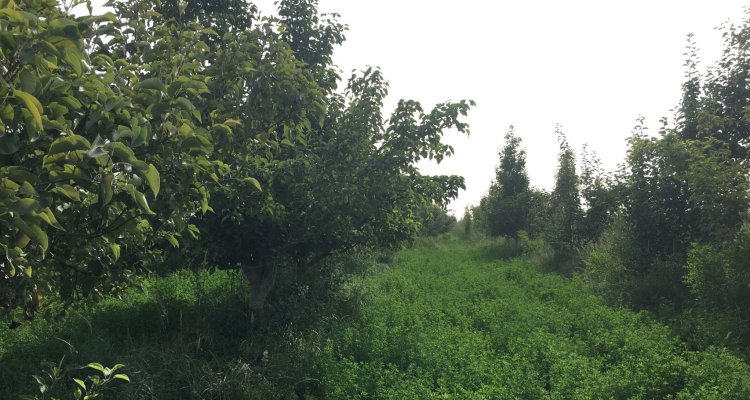
Project
Habitat diversification to support biological pest control and pollination of Xinjiang pear
We will evaluate the attractiveness of 62 flowering plant species for pollinators and natural enemies. I will assess whether establishing strips with promising flowering plant species in pear orchards can enhance population sizes of pollinators and natural enemies, and the associated pollination and biocontrol services. This work will generate new insights that can help farmers to become less dependent on the use of pesticides and make pear production more sustainable.
Background
Xinjiang pear is a valued fruit that is widely grown in the Korla region, Xinjiang, China. Xinjiang pears are managed intensively, and it is thought that pesticide use, lack of diverse flower resources, and landscape simplification are undermining the ecosystem services of pollination and natural biocontrol in Korla. Increasing the availability of flowering plants within orchards may be a feasible strategy to boost pollination and natural biocontrol. However, we don’t know which plant flowering species are suitable to stimulate pollinator and natural enemy communities in pear orchards in Xinjiang.
Project description
We want to focus on four research questions:
- Which plant species are attractive for pollinators, pests and natural enemies in Xinjiang?
- Which characteristics make different plant species attractive for pollinators, pests and natural enemies?
- Can the establishment of flower strips increase the abundance and diversity of pollinators and natural enemies, and reduce the abundance of pests in pear orchards?
- Can flower strips in pear orchards enhance pear pollination, yield and quality?
We will conduct a two-year trial in Korla, northwest China, Xingjiang. The trial is based on a randomized complete block design consisting of plots for the 62 plants species, which are replicated three times.

To assess the insect communities on the plants, I will make observation and sweep netting methods to collect pests, natural enemies and pollinators population and visitation rate on each plant species. I will also assess variables associated with plant phenology (flowering time), plant morphology (plant height and height of the flowers, flower area, color, corolla depth and width), food resources (amount of pollen and nectar, sugar content in nectar) to explore which plant traits are attractive for pollinators, pest and enemies. After benefit plant candidates selected from 2-year trail experiment, we will establish these candidate plants in pear orchards to see their potential to affect biological control and pollination efficiency. We will intercrop these benefit plants strips in pear orchards and assess pollinators by pan traps, pests and natural enemies population by visual observation, pollinator visitation rate, fruit set rate, yield and pear quality (weight, size, sugar content) on pear trees compared with pear orchards with clean cultivation.
Results
Results are still under analyzed.